Does the Cold War Have Lessons for Today?
Carolyn Eisenberg takes a close look at Melvyn Leffler’s “For the Soul of Mankind” to ask whether our current troubles are rooted in a history that continues to haunt us.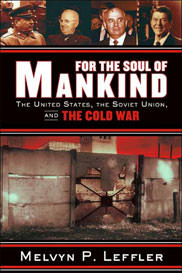
Until Russian troops rolled into Georgia in August, the Cold War was beginning to recede in memory, with an oddly sentimental glow. Here was a clear-cut American victory, in which not a single shot had been fired, at least not between the main antagonists. Considering the apocalyptic potential of the 40-year rivalry, the architects of U.S. policy appeared a wee bit wiser than they had looked during the gloomy days of Vietnam. And by comparison to the floundering “war on terror” and the breathtaking incompetence and ignorance of the Bush administration, the predecessors look like wizards.
Indeed, it has become a commonplace for Bush critics to invoke the golden era, when gifted statesmen like Harry S. Truman and John F. Kennedy, combining “toughness” with skilled diplomacy, kept Americans safe and inspired the world with our nation’s ideals. Throughout his political campaign, Barack Obama has gone out of his way to genuflect to the old “cold warriors” and to imply a return to their sophisticated ways.
And yet for some of us crotchety folks over the age of 50, those old Cold War policies and leaders do not evoke the same positive “buzz.” And there is more than a faint suspicion that the calamities of the present have some roots in that history.
What was the Cold War about? And what explains its persistence? With the declassification of American records and the opening of archives in many nations, including Russia, historians have never been in a better position to answer these questions. And yet the field itself has withered in recent years, with a widening gulf between the monographic studies in the academy and the knowledge of a literate public. Moreover, as left historians have retreated from any subject focused on powerful white men, the field of Cold War history has been largely left to the traditionalists.
Against this backdrop, Melvyn Leffler’s new book, “For the Soul of Mankind: The United States, the Soviet Union, and the Cold War,” provides a welcome infusion of intellectual energy into a subject that still matters deeply, and which can help us grapple with more recent events. Although sometimes described as a “center-left historian,” Leffler cannot be so easily categorized. In this book, as in his previous work, certain qualities stand out: an encyclopedic knowledge of the literature, an immersion in archival materials, a regard for evidence and openness to contradictory information, a lucid writing style and the habit of asking fundamental questions.
Given the peaceful way in which the Cold War ended, why didn’t this happen much sooner? To answer this question, Leffler selects five “moments — short intervals of time, when officials in Moscow and Washington thought about avoiding or modulating the extreme tension and hostility between the United States and the Soviet Union.” The author explicitly disavows any intention to write “a narrative history of the Cold War.” Yet taken together, his self-described “moments” are in actuality a broad swath of Cold War history.
Contrary to popular mythology, Leffler makes it clear that Soviet leaders never had a plan for world conquest, or were even much interested in territorial expansion, apart from areas immediately adjacent to the USSR. Josef Stalin was “evil” but not irrational, and as World War II ended, he hoped to continue the alliance with the United States and Britain. Unlike his partners, he was presiding over a traumatized country — with 20 million people dead, much of the industrial infrastructure in ruins and vast acres of farmland unable to produce food. Germany might be temporarily defeated, but as past experience had shown, its reconstruction could be rapid. Faced with myriad problems, Stalin’s safest bet was cooperation with the West. The United States was in a position to be of massive economic help and to assure the flow of reparations from western Germany. It could also prevent the revival of German and Japanese power and, if so inclined, ratify Soviet ascendancy in Eastern Europe.
As Leffler describes, none of these positive benefits materialized and Stalin became the militant “cold warrior” of popular lore, who cracked down harshly in Eastern Europe, permitted a communist attack on South Korea, rebuilt the Soviet military machine and began accumulating his own stockpile of nuclear weapons.
Yet upon his death in 1953, the new collective leadership, headed by Georgi Malenkov, began to rapidly dismantle the structures of repression and to make the production of consumer goods an urgent priority. With the workers of East Berlin in open revolt and the West German government moving closer to rearmament, Malenkov and his colleagues anxiously sought to reopen the European settlement and to scale back the arms race. And yet over a period of two years, their overtures went largely unheeded by Washington.
From Malenkov, Leffler moves to Nikita Khrushchev and the aftermath of the Cuban missile crisis. The world had come perilously close to nuclear destruction, saved only by John Kennedy’s cautious diplomacy and the Russian leader’s willingness to back down. Yet the first party secretary knew only too well how close they had come, and how a different American leader might have precipitated disaster. Chastened by the experience and driven by the need for domestic reform, Khrushchev beseeched the Americans to reverse the Cold War. As one poignant illustration, he sent no fewer than seven messages to Lyndon Johnson in the first months of his presidency, pointing out areas of possible agreement. Johnson was mildly interested, but preoccupied by Vietnam.
By the time Leffler arrives at the Brezhnev years, 1975-1980, the story has taken on a certain mournful predictability. However, during the years following the demise of Khrushchev, much had changed. The United States had fought and finally lost its first major war, in Indochina. Richard Nixon had shocked the world by visiting China, which had become a mortal enemy of the Soviet Union. And most pertinently, Nixon and Leonid Brezhnev had met several times and initiated the era known as détente with a host of new agreements and dramatic changes in rhetoric. Leffler is surprisingly terse in his treatment of this subject, given his interest in lost opportunities. It is surely significant that no less a zealot than Nixon was temporarily able to disrupt the pattern. Leffler resumes the narrative thread after Nixon had departed and at the point where President Gerald Ford, who had been carefully instructed by Henry Kissinger, was attempting to salvage the new relationship. A SALT II agreement was now ready to be signed, and the Helsinki Final Act had effectively ratified the status quo in Europe, while setting new standards on human rights. In Moscow, Brezhnev had made the development of détente the centerpiece of his foreign policy and fully expected it to continue. But forces were swirling around Ford and Jimmy Carter that would make this impossible. The Russian leader appears almost pitiful as he unsuccessfully pleads with the two presidents to make further progress. He is also stung and humiliated by Carter’s willingness to play the “China card” against him. After months of procrastination, Brezhnev made the reluctant decision to send Soviet troops into Afghanistan, where Islamic fundamentalists were battling a pro-Soviet government. This act froze Carter’s heart and seemed to kill any prospect of reviving détente.
By the time Ronald Reagan became president in 1981, the Cold War was roaring out of control: Nuclear arms negotiations had collapsed, a new generation of nuclear missiles was being built and proxy wars were raging on several continents. Enter Mikhail Gorbachev. As with every Soviet leader before him, Gorbachev urgently wanted a new relationship with the West. Like the others, Gorbachev desired American economic assistance; he wanted to release economic resources so that communism inside the Soviet Union could be rehabilitated. And he dearly wished, as a matter of commitment and not mere verbiage, to free the world from the prospect of nuclear annihilation.
Moreover, Gorbachev was willing to take the concrete steps that would make these aspirations a reality. Instead of insisting on strict reciprocity, he bowed to American demands on both intermediate-range and long-range nuclear missiles. He was determined to cut Russian conventional forces in Europe, regardless of the NATO response. And despite massive American intervention in Afghanistan, he removed all Soviet troops from there without conditions. Most shocking of all, Gorbachev allowed for self-determination in Eastern Europe and stood aside as the Berlin Wall came down.
Gorbachev is obviously the hero of Leffler’s book. It is the Russian who finally ended the Cold War. “Without losing his political faith, he transcended the Marxist-Leninist postulates,” the author reminds us. “He used his authority to retract Soviet power in ways that his predecessors had considered unimaginable. He understood how nuclear weapons had transformed the traditional security imperatives of the Soviet Union and how economic shortcomings required the government to reconfigure Soviet priorities.”
And yet there is a second hero in this story, which surprisingly enough turns out to be Ronald Reagan. This is not the gun-slinging Reagan of right-wing fantasy who single-handedly terrified the Soviets into submission. Quite the contrary, it was the reasonable, idealistic, open-minded Reagan who saved the day. “Reagan’s greatness,” Leffler contends, “was not his build-up of force, but his inspiring of trust.” This was a president who certainly “believed in strength. … But the purpose of strength was to negotiate. Even while he denounced the tyrants who ran an evil empire, he reached out to talk to them.” Because Reagan had the ability not only to talk but to listen attentively, he provided Mikhail Gorbachev with the reassurance that he needed to walk away from the Cold War and change the course of history.
While Leffler evinces particular enthusiasm for Reagan, his admiration for the other American presidents is palpable. Most readers of his book will be surprised by his sympathetic portrayal of the Russian adversaries, but they will find his treatment of the American principals more familiar. According to his description, all of them held the highest ideals, all thought they were advancing the well-being of mankind, all faced “agonizing” choices and each in his own way searched for peace.
Why were so many “wise” leaders, on both sides of the Cold War barricades, unable to stop a 40-year conflict even though they recognized that it was profoundly threatening to their national security? Leffler does a masterful job of examining the specific sources of tension, the reciprocal actions on both sides, the evolving thinking of the principals and the provocative behavior of allies and third parties.
Yet beneath the rich details lies a broad explanation that can account for the repeated failures. One underrated factor is the evolving “configuration of the international system,” meaning that whatever their abstract goals, both Soviet and American leaders were forced to respond to fresh developments in the larger international environment. These were constantly disruptive. Winston Churchill and Stalin might sit down and divide Europe on a piece of paper, yet such plans inevitably foundered on the unanticipated economic woes and political upheaval across the Continent. With so many nations in “meltdown,” it was hard for the Americans and Soviets to find a clear basis for accommodation. Over the years, the same pattern continued as fresh eruptions in the international scene disrupted great power diplomacy.
However, Leffler’s point is that these developments did not eliminate choice and agency. As they responded to events, both Soviet and American leaders were influenced by their distinctive historical memories and experiences. Each perceived discrete threats as well as seductive opportunities. And each would take actions that would arouse the anxieties and sometimes the rapacity of the other. Leaders on both sides saw themselves as struggling for “the soul of mankind” and, until Gorbachev, all were ultimately “trapped” by their own ideals and values.
“For the Soul of Mankind” is without question the most evenhanded book on the Cold War to appear, and it is unlikely to be surpassed. Apart from its intrinsic interest, it is highly relevant to our contemporary travails because it challenges the unfortunate and inaccurate notion that during the Cold War the display of military power was somehow productive of a safer world. Indeed, it was not until one far-seeing leader walked away from the military contest that people across the globe could breathe more freely. Despite its many strengths, the book has some notable shortcomings. While the focus on national leaders makes dramatic sense, it is also misleading. Some presidents were “deciders,” others were not. Despite his reputation for not “passing the buck,” Harry Truman was without a clue when it came to complex international issues. His exceptionally important German policy was totally framed by others in the bureaucracies for reasons of their own. It is not sufficiently informative to know what Truman felt and thought in order to comprehend American choices. In just this way, the inner life of George W. Bush is not an adequate guide to government motivation.
An additional problem is that Leffler too readily accepts everyone’s thinking as equally understandable and well intentioned. Unlike most Cold War authors, he is careful to offer two perspectives rather than one. Yet his virtual silence in the face of outlandish ideas obscures important issues. He tamely informs us that “when Truman ordered that atomic bombs be dropped on Hiroshima and then Nagasaki, these were not tough decisions for him. They were necessary in his mind, to save American lives. They vividly demonstrated American power; they confirmed that enemies of America would pay for their transgressions.”
This seems accurate enough. But is this the place where historical investigation ought to begin or end? How does it happen that this ostensibly decent man from Missouri was willing to drop atomic bombs on two cities, populated mainly by women, children and the elderly, despite the existence of alternatives and contemporary evidence that the war with Japan could end without the use of these weapons? And why was it that experienced advisers did not insist on a formal process of decision-making before killing 200,000 people and using weapons that were known to be the most lethal instruments ever developed by human beings?
This critical edge is also missing when Leffler turns to the subject of the Vietnam War, which he obviously opposes. However, he goes to extraordinary lengths to give us the mind-set of John Kennedy, Lyndon Johnson and their high-level experts. He repeatedly describes how anguished everyone felt, how trapped they seemed to be, how valiantly they struggled to find good options where none was available, how threatened they all felt. By its act of “aggression,” Hanoi had thrown down the gauntlet, leading these officials to fear that if Vietnam fell, so would Laos and Cambodia, Thailand, the Philippines, Indonesia and who knew what else. Leaders everywhere would know that the word of the United States was not to be trusted. Berlin might be threatened. Perhaps Moscow itself might be moved to embrace the Chinese version of communism.
One ends up sympathizing with these worried people, rather than the dead Vietnamese. Yet it would have been useful to point out that such thinking was based on misperceptions and lies. Vietnam was a single country that the United States, for purposes of its own and in direct violation of the Geneva Accords, had chosen to make two. Therefore, the very concept of North Vietnamese “aggression” made no sense and the elaborate trail of consequences was simply imagined. Perhaps people were sincere, but the important question is why two shrewd presidents and their Ivy League advisers were peddling these false ideas. Part of the answer resides in their conformity, careerism, the desire for political advantage and a morbid enthusiasm for military adventure. Yet the deepest reason was that Washington had a wildly ambitious agenda, believing that nations across the globe must follow the American example.
The author seems determined not to cast stones. So much Cold War historiography has been mired in sterile arguments over culpability that he aims to move his readers to a higher plane, where we can more easily view the tragic course of events. Yet it is a fair question whether one can adequately understand the dynamics of the Cold War without considering whether anyone was really responsible for it. And was it really the case that the United States and the Soviet Union engaged in equivalent actions with equivalent results and that each nation had comparable weight in international affairs?
American and Soviet leaders looked forward to a world in which their social system might prevail, and in pursuit of their ideals all contributed to a dangerous polarization. Yet it is also noteworthy that at every point in the Cold War, the United States exerted greater power than the USSR, whether measured by military, economic or political strength. And at every point in this conflict, American ambitions far exceeded those of Soviet rivals.
For Stalin and his successors, control of the nations along Soviet borders and insurance against German revival were vital matters. Other items were peripheral. By contrast, American aspirations were limitless. It was not enough that countries in the Western Hemisphere have friendly governments, which in many instances meant dictatorships as brutal to their own citizens as the regimes of Eastern Europe. U.S. leaders also considered all of Europe and the decolonizing nations of Asia and Africa to be within their bailiwick. The Vietnam War occurred because U.S. officials took it upon themselves to decide how the Vietnamese people should be governed, regardless of their own preferences.
Moreover, in the long litany of actions and counteractions, some behaviors were more damaging and consequential than others. Of these, it is U.S. nuclear decisions that were the most pernicious. A recipe for trouble was offered by the choice to keep Stalin in the dark about the U.S. development of the atomic bomb, to drop atomic bombs on two Japanese cities in a demonstration of American power, to attempt to retain a nuclear monopoly for years afterward and, when that proved impossible, to insist that arms control agreements inscribe American superiority.
And then there was Germany. No single issue mattered more. The survival of the World War II alliance depended on the ability of the occupying powers to work together, and in this they failed. Leffler emphasizes how important all of this was. However, in relating the story in all its complexity, he minimizes two crucial points. One was the American refusal to give the Soviets the reparations that were promised at Yalta. At that meeting, President Franklin Roosevelt, Churchill and Stalin had stipulated that the Soviet Union was entitled to half of an estimated $20 billion in equipment and supplies from occupied Germany. However, from the moment Truman became president, Washington retreated from that commitment. By the time of Potsdam, Secretary of State James F. Byrnes had abandoned it. Now that the European war was over, America had other priorities. Chief among them was the desire to use German raw materials and industrial production to rebuild the economies of Western Europe. U.S. leaders did not intend to cut out the Russians completely, but to subordinate their needs to those of other European nations and to Germany itself. For the Russians, this came as a stunning blow. For years, they had carried the main burden of defeating Hitler’s armies, with 100,000 of their soldiers killed capturing Berlin. And now with the Soviet economy in a desperate condition, the Americans were depriving them of the fruits of victory.
The more arresting point is that it was the United States and not the Soviet Union that chose to divide Germany. Leffler acknowledges this backhandedly when he observes that by 1947 “American leaders could no longer afford to haggle over the future of Germany. They thought it best to unify the western zones and create a federal republic.” Blink and you miss this. For the author, it is simply another link in a long causal chain. However, in reality it was not a mere link, but a momentous and catastrophic breach.
At a time when there was still some degree of political pluralism in eastern Germany and when the Soviets were still aiming to unify the country, the United States effectively tore up the Potsdam agreements, shutting the Soviets out of the largest, most populated and industrially rich portion of the country. Inside the U.S. government, this was a fiercely debated decision because leaders of the American occupation understood that if West Germany became a separate country, the eastern zone would be completely subjugated and the nations of Eastern Europe, which still retained significant freedoms, would be doomed.
As the dissenters anticipated, the consequences were profound and long-lasting. The immediate result was Stalin’s decision to blockade Berlin. This was not because he wanted to starve a city or to snuff out freedom, as Barack Obama so recently assumed. The Soviet leader cut off western access through the eastern zone in order to demonstrate that if the Western powers were abandoning the wartime agreements, they had no legal basis for remaining in the city. Although generally overlooked, during the so-called blockade eastern Germany continued to provide the West Berliners with most of their supplies. Furthermore, it was Stalin’s obvious and openly stated aim to halt the creation of a separate West German government and to go back to Potsdam. Of course, the effort backfired, solidifying popular support for partition and hastening the formation of NATO. Yet this military alliance might have been superfluous if the United States had not abandoned diplomacy on the German question.
In the wake of the Berlin crisis, the line across Europe was sharply drawn and the Cold War became more difficult to reverse. From the outset, this competition entailed horrific consequence for millions of people across the globe. “For the Soul of Mankind” underplays this. We are reminded of the potential dangers, but we get no indication of the actual suffering that ensued. Inside Eastern Europe, people’s lives were torn apart, as was the case for the Koreans, the Iranians, the Guatemalans, the Congolese, the Indonesians and many others.
When it comes to Vietnam, we find the obligatory acknowledgment that more than 50,000 Americans died, and millions of Asians. Yet it is hard to discern from this book the real scale and character of American destruction: the dropping of napalm, the use of defoliants which scorched the countryside, the burning of villagers, the torture of Viet Cong prisoners, the assassination of rural leaders, the relentless bombing. Several months ago on this Truthdig Web site, journalist Fred Branfman posed a rhetorical question: “Is it really possible for America to have killed hundreds of thousands of Indochinese peasants and still, 30 years later, act as if it never happened?” The answer is yes, and despite its many virtues, “For the Soul of Mankind” nurtures that blindness.
This returns us to the troubling present and the still developing crisis over Georgia. American news commentators have hastened to invoke the Cold War, suggesting that Vladimir Putin embodies the militarism and brutality of his Soviet forebears. Yet the Cold War lens might enable us to perceive that in Georgia, as in the Middle East, the American tendency to overreach has once again gotten another country into a conflict it cannot handle.
Mikhail Gorbachev had a dream, and it was of a safer world in which military alliances would disappear and the habit of using force was replaced by a habit of diplomacy. Yet the Americans never bought into Gorbachev’s vision. Instead, they took the occasion of Soviet collapse to engage in new interventions and to build up NATO close to its borders. The Russian attack on Georgia is the unhappy consequence of American provocation.
It is long past time for Americans to give up their romantic image of the Cold War, and to apprehend its irrationality and damage. Despite its disappointing waffles, “For the Soul of Mankind” is a fascinating, brilliant book that can only advance a vital debate.
Carolyn Eisenberg is a professor of U.S. foreign policy at Hofstra University and the author of “Drawing the Line: the American Decision to Divide Germany, 1944-49.” She is currently writing a book on Richard Nixon, Henry Kissinger and the Vietnam War, to be published by W.W. Norton.
Your support matters…Independent journalism is under threat and overshadowed by heavily funded mainstream media.
You can help level the playing field. Become a member.
Your tax-deductible contribution keeps us digging beneath the headlines to give you thought-provoking, investigative reporting and analysis that unearths what's really happening- without compromise.
Give today to support our courageous, independent journalists.

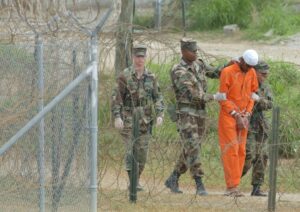
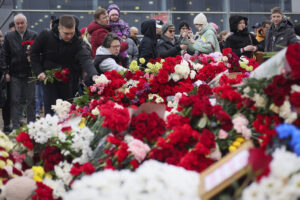
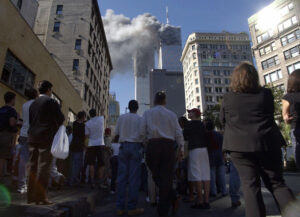

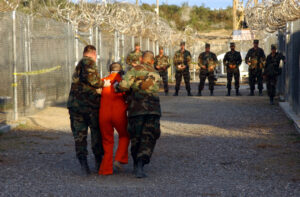

You need to be a supporter to comment.
There are currently no responses to this article.
Be the first to respond.